Your Body, Yourself: Part 2 (Final)
Your Body, Yourself: Part 2 (Final)
Body Modifications
In Your Body, Yourself Part 1, we have already mentioned the fact that dieting and exercising are common ways used by man and woman to try to change their bodies - and there are many other ways: corsets and girdles, breast implants, liposuction, botox injections, penis enhancement, costemics and teeth straightening. But there are also more "unusual" examples of peoples' bodies being modified to comply with current sociocultural trends, particularly norms of female beauty; in Burma (Myanmar) Padung women use neck rings to elongate their necks; in some rural areas, Chinese people still bind little girls' feet from a young age because tiny feet for women are regarded as beautiful. Tattooing and scarification; body piercing; circumcision; female genital mutilation and castration are all examples of the modification.
Dan Brown is arguably one of the most successful contemporary novelists in the world. He has certainly broken virtually every record with his book sales and his book The Da Vinci Code made him famous. Angels and Demons was almost as successful and together with his book, The Lost Symbol, the fictitious Professor Robert Langdon is the main character and hero in all three, and he is a "symbolist" expert in the analysis of symbols and symbolism. There is agreement on, even amongst his critics, about one thing as far as Dan Brown and his books are concerned - he does meticulous and thorough research on his topics. In his book, The Lost Symbol, Prof. Langdon's main adversary is a certain Mal'akh (a male), whose body is covered from head to toe in tattoos, in symbols. This is what Brown has to say about such tattoos - and let us consider this for the sake of our discussion:
The goal of tattooing was never beauty. The goal was change. From the sacrificed Nubian priests of 2000 BC, to the tattooed acolytes of the Cybele cult of ancient Rome, to the moko scars of the modern Maori, humans have tattooed themselves as a way of offering up their bodies in partial sacrifice, enduring the physical pain of embellishment and emerging changed beings. Despite the ominous admonitions of Leviticus 19:28, which forbade the marking of one's flesh, tattoos had become a rite of passage shared by millions of people in the modern age - everyone from clean-cut teenagers to hard-core drug users to suburban housewives. The act of tattooing one's skin was a transformative declaration of power, an announcement to the world: I am in control of my own flesh. The intoxicating feeling of control derived from physical transformation had addicted millions to flesh-altering practices - cosmetic surgery, body piercing, bodybuilding, and steroids - even bulimia and transgendering. The human spirit craves mastery over its carnal shell. - The Lost Symbol: Dan Brown (2009:10)
In all communities, people change the appearance of their bodies in some way. Some of these changes could perhaps more accurately be termed "body decoration" or "adornment" and they might be permanent - scars, tattoos, (as we have seen) changes in the shape of a body part, or more temporary - in the form of paint, cosmetics or objects such as feathers, jewellery, skins or clothing. In addition to aesthetic considerations, body decoration and adornment in particular are also used to designate status, rank, gender, occupation, religion and identity within a community - and usually in keeping with its sociocultural pattern. Such "markers" include a king's crown, the red hunting jacket of an English gentleman, the gold-embroidered jacket of the Indian rajah, the leopard skin regalia of the Zulu king, a cross, or Star of David for those with a Christain or Jewish inclination.
The erogenous areas of the body are also accentuated: women's red lips, short skirts, low-cut dresses, exposed stomach etc. Men grow beards and wear low-slung jeans. The body may also be more permanently marked or altered, often to indicate an individual's change of status. An example, in South Africa, is circumcision in various South African communities where it forms part of a broader initiation ritual.
Tattooing and scarification, as we have indicated, are also forms of permanently marking the body. Scarification is practised among a number of societies such as the Nuer and Dinka in Africa and designs are created on the body by scars that are ritually applied at particular times (eg during initiation).
It is said that tattooing may date back as far as the Upper Palaeolithic era (10 000 - 40 000 years ago) and that it is one of the most persistent and universal forms of body art. It is particularly prevalent in Polynesia and a contemporary example is displayed by the New Zealand Maoris and many of the players in their national rugby team, the All Blacks.
Tattoos are created by inserting ink or some other pigment through the epidermis (outer skin) into the dermis (the second layer of skin), using needles. Tattooing may simply be done because it is regarded as attractive, but tattoos often convey different meanings about the wearer and his or her position or status in the community. In other words, tattoos are a way in which people transform and express themselves - and a way that human beings establish themselves as sociocultural beings. Tattoos have been used to punish (eg by marking slaves or prisoners) or to indicate clan or cult membership, religious or ethnic affiliation, marital or social position. Tattoos communicate, not only in a simplistic sign-meaning manner but also through colour, style, the method of execution and positioning on the body. At first conspicuously inscribed to be "read", the trend lately has been toward a personal or private statement and, women especially, tend to favour smaller tattoos in intimate places.
Body piercing, female genital mutilation and castration are still more ways of permanently marking the body and briefly, these entail the following:
Body piercing: As always, a practice such as body piercing should be understood in the particular and current sociocultural context where it occurs. Throughout the world, however, aesthetic considerations seem to predominated (eg the pierced noses of some women in India). Contemporary and earlier trends in body piercing do not seem necessarily to stem from a community's traditions and rituals over generations. For many years, ear piercing has been common, which enables women to wear earrings securely. Almost universally practised, the Fulani of Sudan and the Masaai of Kenya are African examples of women wearing elaborate (and quite heavy) earrings consisting of wire and beads - which result in the earlobe being stretched. Today, in urban contexts all over, young people in particular are having their ears pierced. Some have multiple ear piercing, but also nose, eyebrow, lip, tongue and navel piercing. Some of these are intended to indicate sexual orientation or are said to increase sexual pleasure - the nipples, the penis, labia and clitoris have also become parts of the body to be pierced for the insertion of rings and other objects.
Female genital mutilation: As opposed to male circumcision, genital cutting - primarily the excision of the clitoris - is not done for enhanced sexual pleasure or hygienic reasons, but to deny sexual pleasure. It is still practised in some 28 African countries. These practices are often enforced by older women in a community where the sociocultural system construes female sexuality to be rampant and uncontrollable and insists that measures be taken to inhibit female sexuality. Despite widespread opposition and the fact that the concept of bodily integrity is included in the International Bill of Human Rights, the practice stills occurs. Anthropological ethics and relativism of course also come into play here - does a community of people have the right to pursue its "traditional practices and values"? What about universal human rights and values?
Castration: As an extreme measure to control sexuality, male castration is intended to make men more docile and therefore less aggressive (eg guards of the female quarter in the women's section (the harem). However, castration for this reason now seems to belong to history.
Body Techniques
As far as stance, bearing, moving or resting the body is concerned, there is variation among communities throughout the world. Some people are comfortable with squatting, while others always use stools or chairs. There are different ways (styles) of walking, sleeping, dancing, jumping, climbing, coughing, spitting, bodily hygiene (bathing, caring for teeth, hair etc), swimming and eating. Body techniques are passed on from generation to generation by teaching or by example and are often adaptions to particular contexts; of course; gender and age also play a role.
The Social Body
When reference is made to the "body politic", an analogy is being made between a human, living body and social entities (eg a community or society). The implication is an "organic whole" whose independent parts function together as a unit.
Body Language
When we discussed body modifications and body techniques earlier, there was already the implication of "sending messages" or "conveying certain meanings" by means of the body. Human beings communicate - and communicate extremely efficiently - via a diversity of languages. Despite this efficiency, however, a full understanding of verbal "messages" is only possible with the aid of body language.
Gestures and expressions, for example, add human emotions and intentions to a specific verbal communication. Is the person who is "sending the message" happy, sad, cross, bored, enthusiastic or tired? It is said that at least 90% of emotional information is transmitted by body language and tone of voice.
The "science" of body language is kinesics and humans have a vast array of ways to communicate by means of their bodies:
Gestures complement spoken messages:
- Nodding the head while saying "yes"
- Raising the eyebrow while asking a question
Nonverbal signals may contradict the spoken messages
- If the verbal communication is not true, this can usually be "read" in the body. For example: "I love you", "Glad to see you again after all these years", "I am happy for you that your team won!" might all be contradicted by the eyes or facial expression.
Body Language is not universally the same
- The people of Sri Lanka move their heads slowly in a sideways movement to indicate yes if asked to do something
- In Greece "no" is indicated by jerking the head back so as to lift the face.
We have 80 facial muscles capable of making more 7000 facial expressions!
Finally, proxemics, the study of human beings' perception and use of space, is also related to body language. Differences have been discerned across different sociocultural systems - particularly as far as the use of personal space is concerned. For example, people have different norms as far as the space around their bodies is concerned - especially in terms of closeness when around other people. In Spain, Portugal or Italy and in most African countries people may stand quite close to each other, and even touch when walking. In the United States and England, the "personal space" is often bigger.
Body Parts
Perception of "the body" or "our bodies" usually implies the whole body, including its parts - organs, legs, hands, ears, etc - in other words, the parts of the body are not normally regarded as separable. Due to advances in technical and medical science, however, they have become separable - it is possible to donate a kidney to another person without the transplantation necessarily having an effect on the donor's life.
"Harvesting" organs from the bodies of people who have died has also become commonplace. A logical, but harmful, consequences of such technological advances has been trafficking in body parts, with far-reaching ethical implications:
- the flow of organs "follows the money"
- bodies of poor people could (are being) be viewed as commodities providing detachable spare parts to people in the First World
If you believe you are your body, who are you if you receive a body part from someone else?
End of Part 2
Thank you for reading.
Images are linked to their sources in their description and references are stated below.
Authors and Text Titles
CR Ember 2005 : Anthropology 11th Edition
WA Haviland 2008: Anthropology: The Human Challenge 12th Edition
C Delaney 2004: Investigating Culture
Thank you @foundation for this amazing SteemSTEM gif
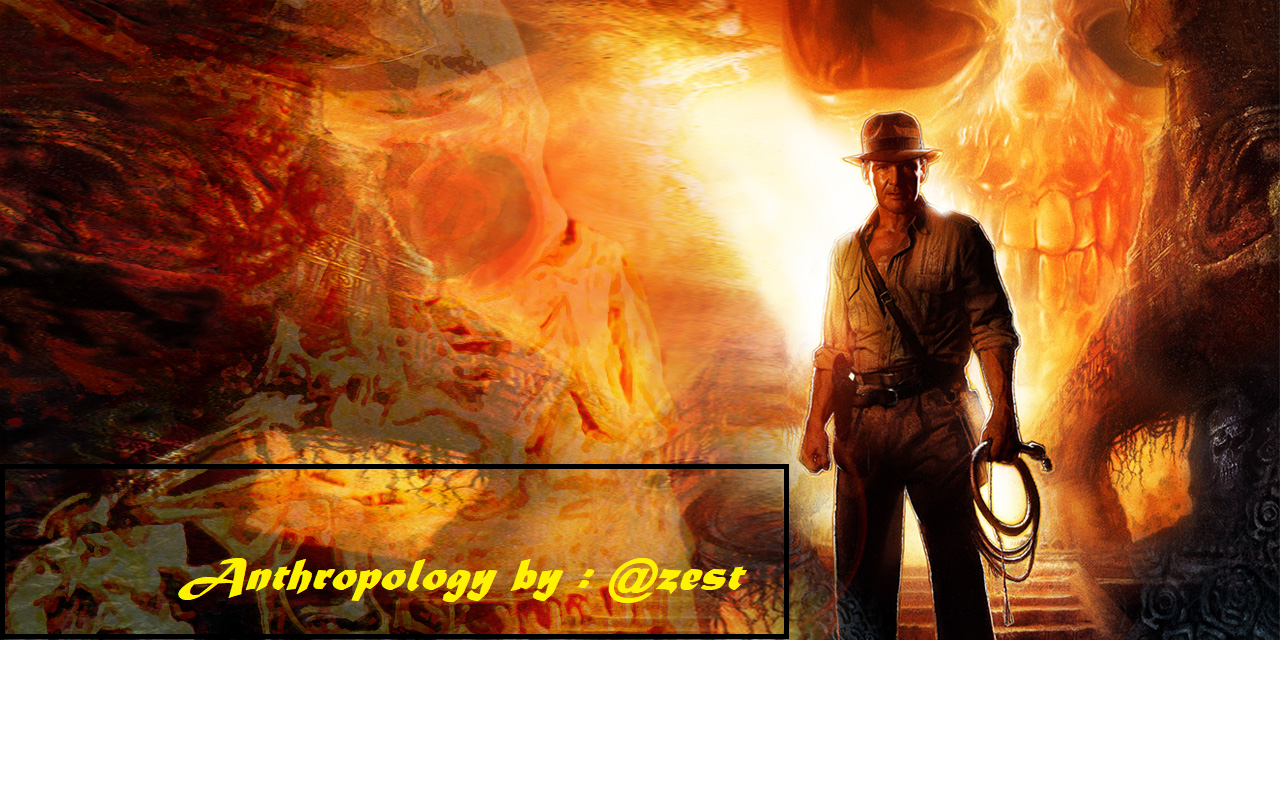
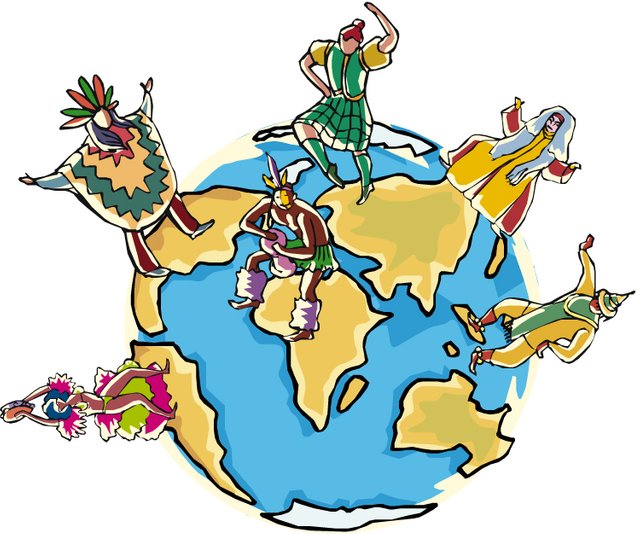
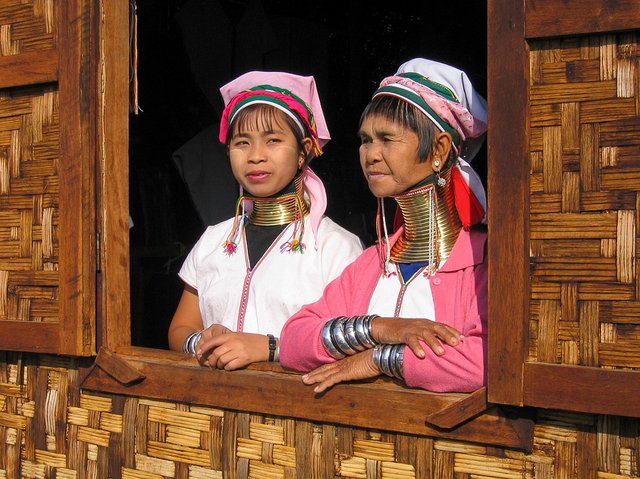


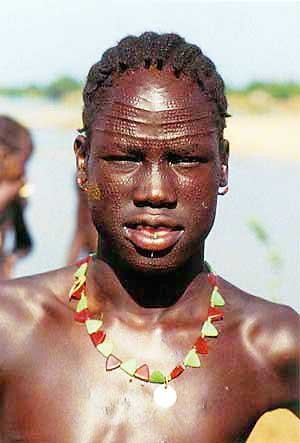
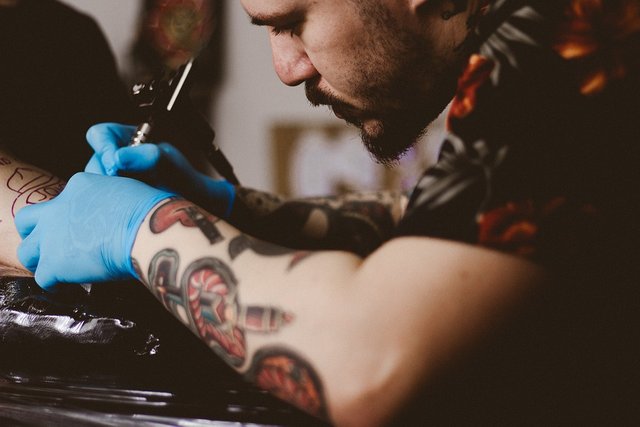
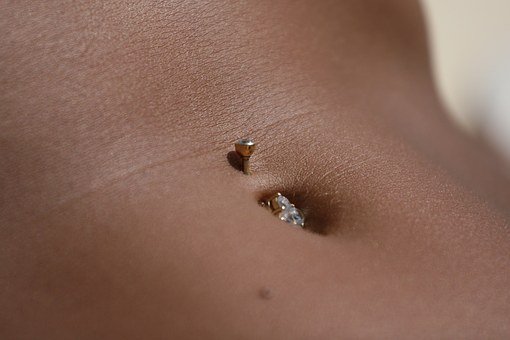
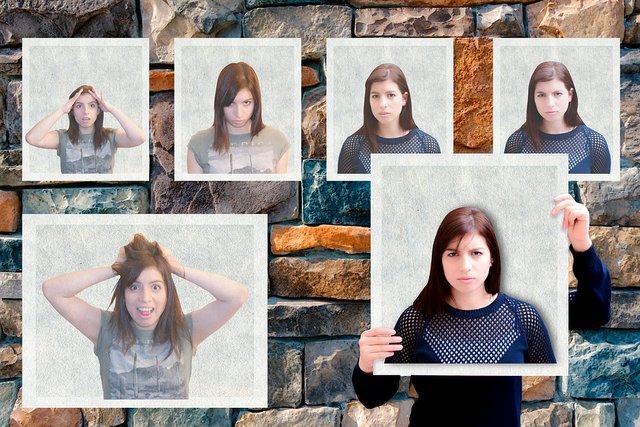
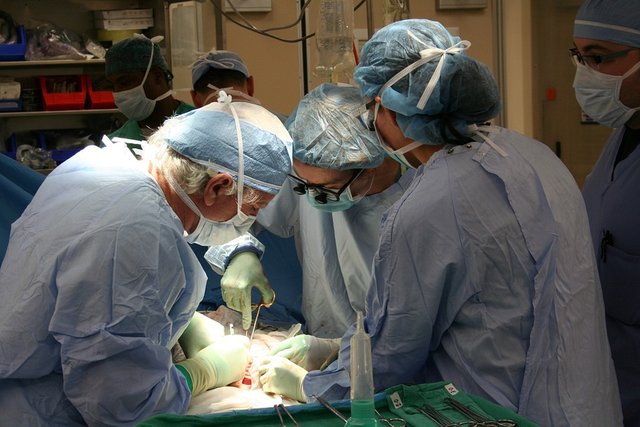

Your article shows that there was and is a vast variation of techniques and reasons for altering the body/skin. May it be for cultural or beauty related intentions, it is fascinating.
Human skin as a canvas and a message.
I did a tattoo in my twenties just for the fun of it and for having been curious if I could endure the pain. Also it was partly a hidden rebellion towards my "authorities" and maybe something I did not know. Also, I guess, I was doing it for missing something deeper in my own culture which did not provide rituals with a certain meaning other than going to church. From what my former part of "me" thought and felt this was an experience, a chance I rarely was able to catch. So I got myself into something which was available at that time and less risky as other activities.
To give and receive meaning through body appearance in our "modern" times I compare for example movie actors from today to those in the 70s and 80s. The outer appearance also followed a certain "sameness" of hair- and body-style which points into the direction of becoming "cover-like" - people try copy perfect photographs. This is a trend originating from the world of movies, the "Hollywoodization" of people:) - Does it have a deeper meaning? I don't know. I would like you to answer on that.
Thank you for providing this thought provoking content!
I also have tattoos, but mine was done to represent a certain point of my life either after an achievement or a better understanding of the idea of life. They are more symbolic tattoos rather than for body decoration:)
The section " Images and Perceptions of the Body", in Your Body, Yourself : Part 1 covers this question quite well:)
:-) done! I've read it and it gives answers to my question. Well done! I really enjoyed reading it.
Reminds me on the fact that J. Lopez insured her beautiful back "thing". LOL
Yes!! People here stand really close to you 😂
I really enjoyed this series @zest.
Thank you abi, I managed to get my fav author into the post:)
I saw that!! You fitted him in really well ...
Time to go to bed. Sleep well 🙂
Good night, sweet dreams :)
xoxo
...I wonder how ants deal with these methods :D
Really enjoyable post btw, making me think more about evolutionyness :)
In an "ant - ropological" way - (that was a really bad joke)
hahahah ffs! so bad, such an ANTiclimax :P
There's a type of scarification my mum told me about. This kind was practiced by the ancient Ife (Western Nigeria). This kind is done with hot knife all over the face; after which hot water is poured on the face to seal up the wounds. This really sounds scary
That does sound scary buddy, but stay tuned I will expose you to more but keep an open mind. Just let us try to understand and appreciate the different cultures, let us not judge:)
Wow!! My interest has been piqued buddy. I'd be expecting to see more :)
excellent write up Zest, thank you for the full brief !
My dear boet!!
thank you!!!
Your post really reminded me of those interesting books. I also believe changing one's part body artificially and naturally is lack of self esteem/confidence.
There is a number of ways we could approach it and that could be one as well.
True. You could do well to tell us. Thanks
excellent post, I really like greetings
Thank you!!!!
thanks to you I thank you if you support me greetings
Sometimes these "adornments" worn to accentuate certain areas of the body, specially that of women's, serve another function which is totally different to the decorative or aesthetic ones. Take the example of high heels, they are worn by women to make their legs look longer and sexier, but in the negative side, they can affect women's mobility , making them kind of imprisoned or easy to be assaulted . I hope you get my idea.